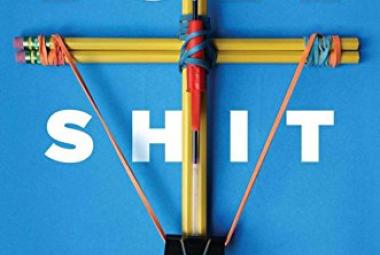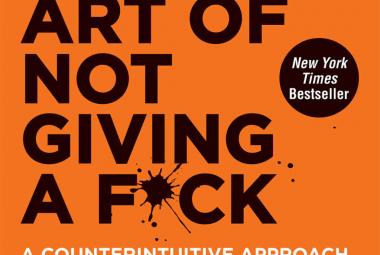In his book drive, Daniel Pink (2010) describes how people are motivated. In the past decennia, different theories have been developed to answer the question: where do people get their Drive from? Motivation theory 1.0 describes that people are motivated when their existence is threatened. Motivation theory 2.0 describes that people are motivated by reward and punishment, the metaphorical carrot and stick. This is where most organizations base their policies on. Motivation theory 3.0, the latest one, describes that people only act when they are intrinsically motivated, when they can act on their strengths for instance, or feel that they can make a difference.
In this book, Pink describes why Motivation theory 2.0 is outdated and how motivation theory 3.0 can be used to motivate people.
Let us start with THE SEVEN REASONS WHY MOTIVATION THEORY 2.0 DOES NOT WORK. Why is the theory of carrots and sticks no longer relevant in this day of age?
Using carrots and sticks reduces intrinsic motivation. Knowing you will get a reward when you do something reduces the chance of continuing the activity after you have been given the reward. In research done by Lepper & Green (1973), three groups of children were asked to draw pictures. The first group was promised a certificate, the second group got a certificate as a surprise after the drawing took place and the third group did not get a certificate at all. When the experiment was done, the children’s drawing behavior was observed. The children from groups 2 and 3 kept on drawing as they did before the experiment. However, the first group, the group that was promised the certificate beforehand, drew significantly less after they received the certificate.
Using carrots and sticks reduces performance. 51 studies done by the London School of Economics in 2009 showed, that when people were paid to develop certain skills, higher financial rewards led to lower results.
Using carrots and sticks can reduce creativity. Glucksberg (1962) investigated the impact on solving a task when the task is being rewarded and defined two groups of tasks: algorithmic tasks (which involves relatively little thinking) and heuristic tasks (which involve creative thinking) Interesting enough, the algorithmic tasks where finished faster when rewarded, but the results of the heuristic tasks were done less well, because the rewards reduced the focus on problem solving.
Using carrots and sticks can reduce desired behavior. Mellstrom & Johannesson (2008) proved that paying blood donors had a negative effect on the number of people who wanted to donate blood. In the experiment, 153 women were questioned. In the group where blood donation was voluntary, 50% of the women would participate, in the group where money was offered, only 30%.
Using carrots and sticks can increase indulgence and unethical behavior. One example is an experiment in the daycare sector. Because parents regularly picked their children up late, a fine was introduced to ´punish´ parents who came to pick up their kid(s) after closing time. This fine actually led to an increase of late comers of 100%, apparently because parents saw the extra payment as a way to buy of their guilt of being late (Gneezy & Rustichini, 2000).
Receiving carrots and sticks can become addictive. Suvorov (2003) shows in his Principle-Agent theory that a reward can increase motivation to show a certain behavior in the short term. However, since people are getting used to the reward, one has to keep on rewarding the same behavior over and over again. Worse, after a certain amount of time, the rewards are taken for granted and need to be increased to gain the same level of motivation.
Using carrots and sticks can lead to short term thinking. Examples can be found in stock exchange listed organizations, focusing on (short term) quarterly results while hoping to increase the stock price is the one reason why economic bubbles and therefor crisis come to pass.
According to Pink, there are also situations in which rewards can help to motivate people. This applies to tasks which are algorithmic and boring, that no intrinsic motivation or creativity is ever present to do the task. Pink encourages rewarding a task only when it is both a routine task and when it is impossible to make the task more challenging.
The difference between Motivation 2.0 and 3.0 can be described using two types of behavior: TYPE-X AND TYPE-I BEHAVIOR. Type-X behavior is extrinsically motivated behavior and therefore related to Motivation theory 2.0. Type-I behavior is behavior that comes from intrinsic motivation and is therefore linked to Motivation Theory 3.0. A few notes to distinguish the two:
- Type-I behavior can be can be taught.
- Type-I people, who are intrinsically motivated to keep their life on track, are in the long term almost always more successful than Type-X people, who only base decisions on external factors such as money.
- Fair rewarding is important to all, for both Type-X and Type-I people
- Type-X behavior ends, while Type-I is sustainable. Praising someone (Type-I) can be repeated indefinitely, in contrast to money (Type-X), which can only be spend once.
- Type-I behavior increases physical and mental health, therefore Type-I people generally have more self-esteem, more interpersonal relationships and are happier than Type-X people.
HOW TO INCREASE TYPE-I BEHAVIOR?
There are three elements which increase Type-I behavior: Autonomy, Mastery and Purpose. Decy & Ryan (2000) define AUTONOMY as ´the freedom to be able to choose to work autonomously or create mutual dependency with others´ and thus describe the freedom to steer themselves. Control leads to docility, autonomy leads to commitment. Pink describes Autonomy in more detail using the four T´s, Task, Time, Technique and Team.
Autonomy in Tasks means that people get to decide what they are going to work on themselves. One example of a company who has implemented this is 3M, where employees get to spend a certain percentage of their total time to spend on a project of their own choosing.
Autonomy in Time means that employees decide themselves how much time they need to spend on a certain task. The basic assumption is that people want to do their job well, and maximizing the number of time could only prevent someone to perform at their best.
Autonomy in terms Technique describes the possibilities of increasing the freedom of work. For instance by using teleconferencing or mobile phones or setting up equipment so that people can work from home.
Autonomy in Teams means that people can get to choose who they want to work with. Research shows that people who can choose their own teams are happier at work than people who work in teams which are pre-defined.
When autonomy leads to commitment, people want to get better in what they do; therefore MASTERY is the second element of increasing Type-I behavior. Pink describes three laws of mastery:
Mastery is a mindset of improvement goals. Type-I people believe that effort can increase one’s ability to perform a task that matters. This in contrast to Type-X people, who believe they cannot influence their performance and therefore believe their efforts are useless. The Type-I person would go for a so called Improvement-Goal, for instance ´Learning to speak French´, while the Type-X person would go for a Performance-Goal, ´to pass the French exam´. This is a difference in mindset.
Mastery is agony, which means it is a long road to mastery, rather 10 years than 2. Putting effort into something important is satisfying and can add meaning to life. Dweck (1999) writes: effort means you care about something enough that you are willing to work for it.
Mastery is an asymptote, the final law, describes that full mastery can only be approached and will never fully be achieved. There will therefore always be room for improvement.
The third element to increase Type-I behavior is PURPOSE, the context of mastery and autonomy. People who are motivated link their desire to a purpose higher than themselves, and those who do are usually happier than the ones who don´t. Strickland says that ´the value of someone’s life can be measured by someone’s ability to affect the fate of others´. Dunn & Norton (2008) therefore write, that companies should free up a certain amount of resources, which the employees can give to a charity of their choosing. This motivates the employees and helps the good work of the charities.
Continue reading:
Leading Change - J.Kotter (summary)
BRONNEN:
Deci, E.L. & Ryan, R.M., ‘Self-Determination Theory and the Facilitation of Intrinsic Motivation, Social Development and Well-Being’, American Psychologist 55 (januari 2000). P.68.
Dunn, E.W., Norton, M.I., ‘Spending Money on Others Promotes Happiness’, Sience 21 (maart 2008).
Dweck, C., 1999, Self-theories: Their Role in Motivation, Personality, and Development, Philadelphia: Psychologoy Press.
Glucksberg, S., ‘the influence of Strength of Drive on Functional Fixedness and Perceptual Recognition’, Journal of Experimental Psychology 63 (1962), p. 36-41.
Gneezy U., & Rustichini, a. ‘A Fine is a Price’, Journal of Legal Studies 29 (januari 2000).
Lepper, Mark R.; Greene, David; Nisbett, Richard E., Undermining children's intrinsic interest with extrinsic reward: A test of the "overjustification" hypothesis. Journal of Personality and Social Psychology, Vol 28(1), Oct 1973, 129-137.
Mellström, C. & Johannesson, M., Crowding out in Blood Donations, Was Titmuss Right?’, Journal of the European Economic Association 6, nr.4 (juni 2008), p.845-863.
Pink, D,H.; 2010; Drive- de verrassende waarheid over wat ons motiveert, Amsterdam: business Contact. (order this book)
Suvorov, A., ‘Addiction to Rewards’, presentatie tijdens de European Winter Meeting van Economics Society, 25 Oktober 2003.















